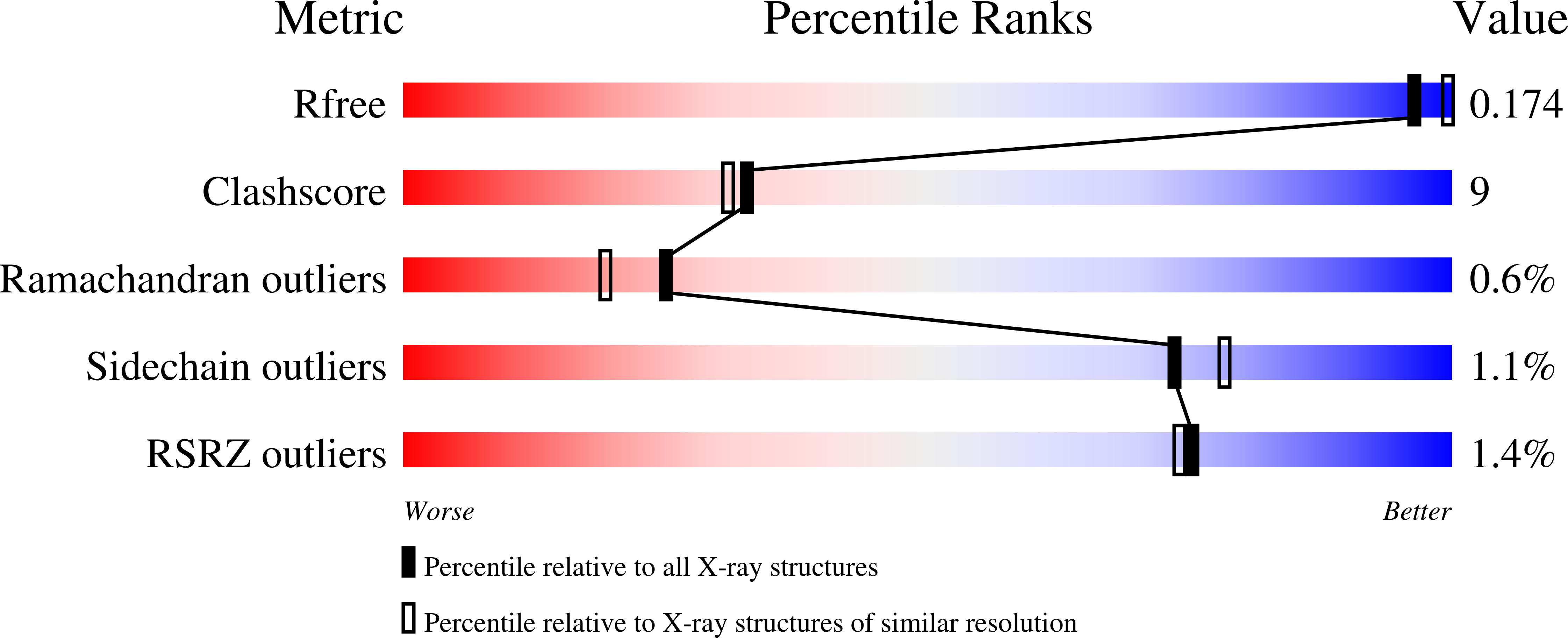Crystal Structure of a Catalytic Site Mutant of beta-Amylase from Bacillus cereus var. mycoides Cocrystallized with Maltopentaose
Miyake, H., Kurisu, G., Kusunoki, M., Nishimura, S., Kitamura, S., Nitta, Y.(2003) Biochemistry 42: 5574-5581
- PubMed: 12741813
- DOI: https://doi.org/10.1021/bi020712x
- Primary Citation of Related Structures:
1ITC, 1J18 - PubMed Abstract:
The X-ray crystal structure of a catalytic site mutant of beta-amylase, E172A (Glu172 --> Ala), from Bacillus cereus var. mycoides complexed with a substrate, maltopentaose (G5), and the wild-type enzyme complexed with maltose were determined at 2.1 and 2.0 A resolution, respectively. Clear and continuous density corresponding to G5 was observed in the active site of E172A, and thus, the substrate, G5, was not hydrolyzed. All glucose residues adopted a relaxed (4)C(1) conformation, and the conformation of the maltose unit for Glc2 and Glc3 was much different from those of other maltose units, where each glucose residue of G5 is named Glc1-Glc5 (Glc1 is at the nonreducing end). A water molecule was observed 3.3 A from the C1 atom of Glc2, and 3.0 A apart from the OE1 atom of Glu367 which acts as a general base. In the wild-type enzyme-maltose complex, two maltose molecules bind at subsites -2 and -1 and at subsites +1 and +2 in tandem. The conformation of the maltose molecules was similar to that of the condensation product of soybean beta-amylase, but differed from that of G5 in E172A. When the substrate flips between Glc2 and Glc3, the conformational energy of the maltose unit was calculated to be 20 kcal/mol higher than that of the cis conformation by MM3. We suggest that beta-amylase destabilizes the bond that is to be broken in the ES complex, decreasing the activation energy, DeltaG(++), which is the difference in free energy between this state and the transition state.
Organizational Affiliation:
Graduate School of Agriculture and Biological Sciences, Osaka Prefecture University, Sakai, Osaka 599-8531, Japan.





















